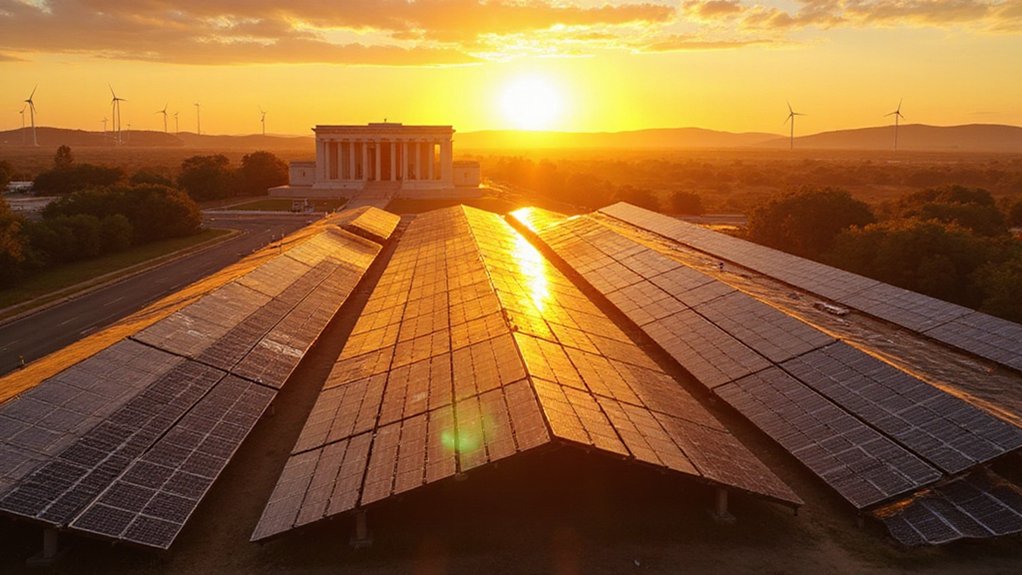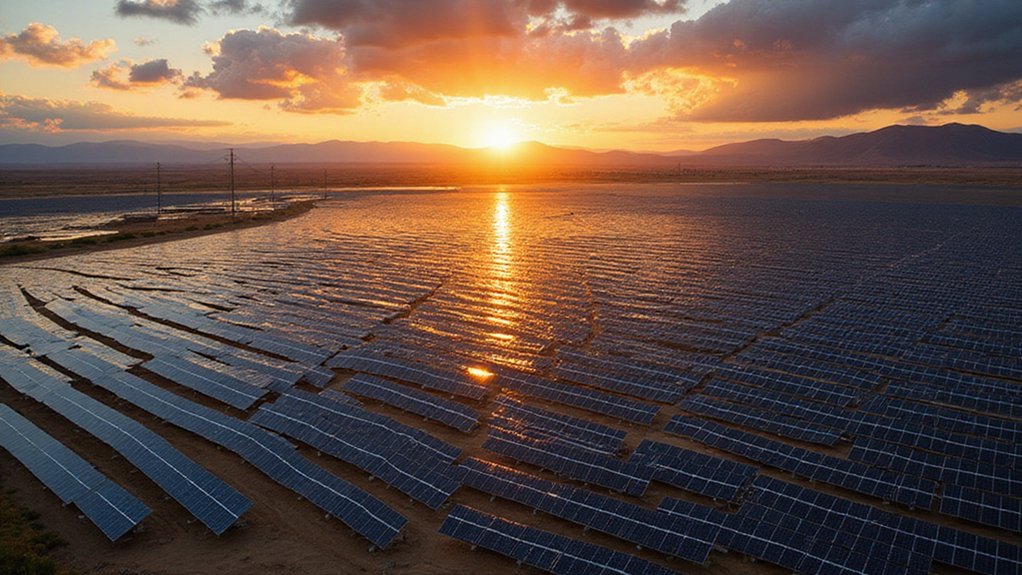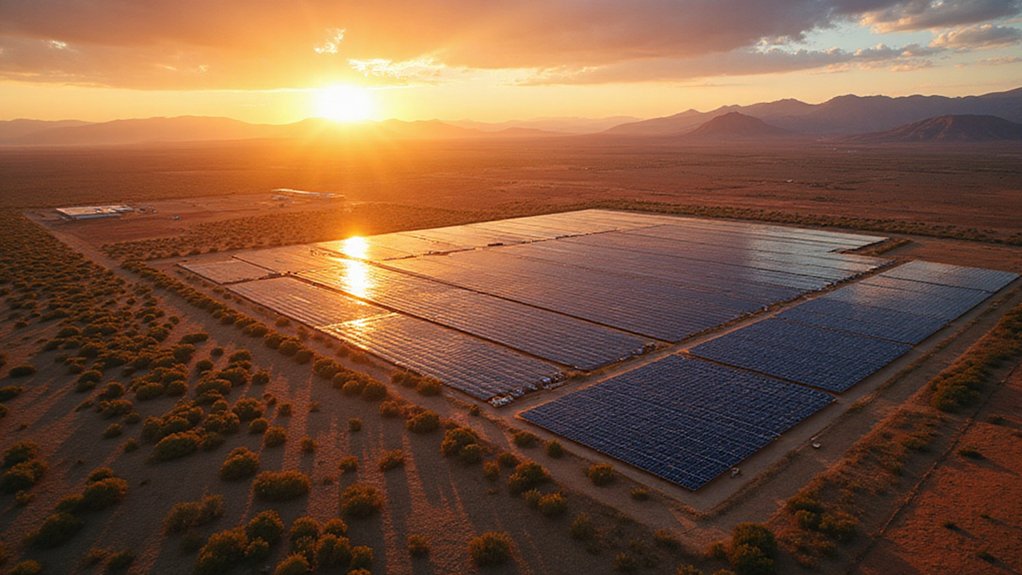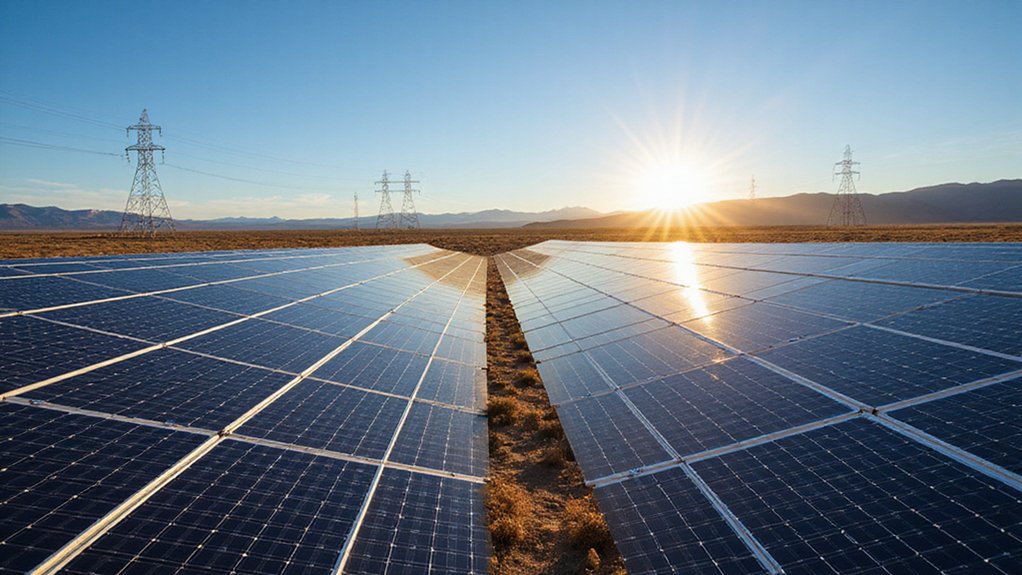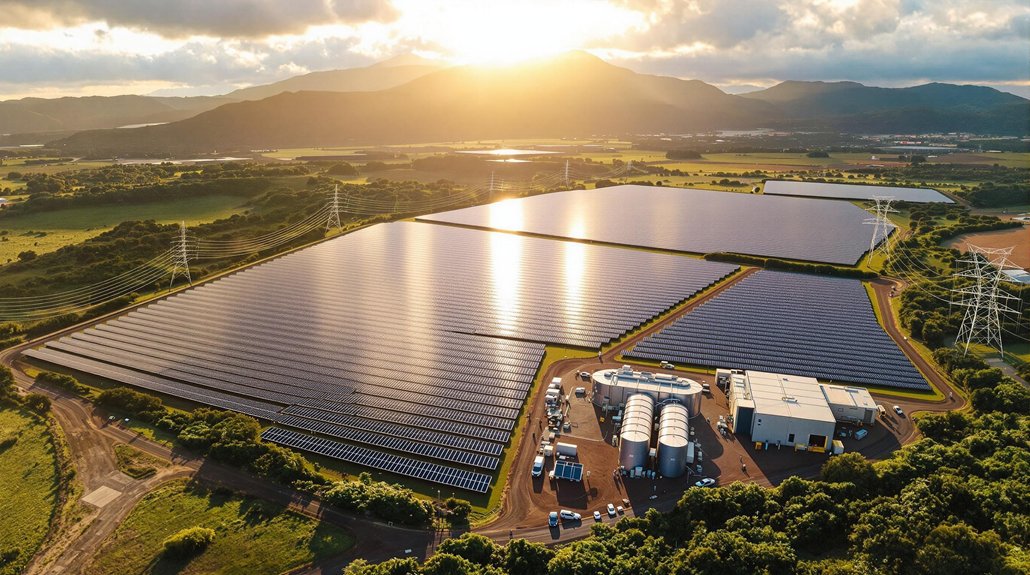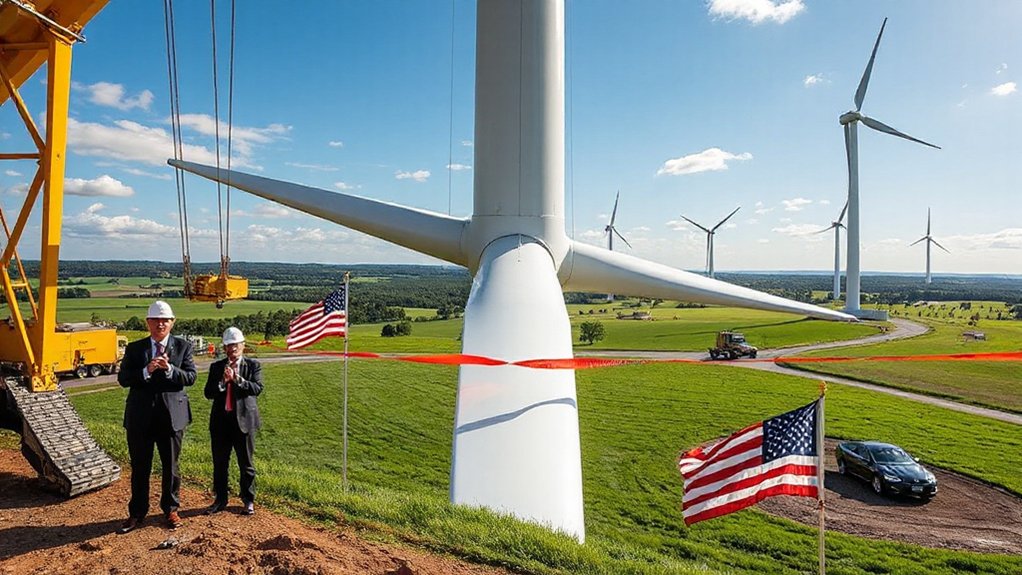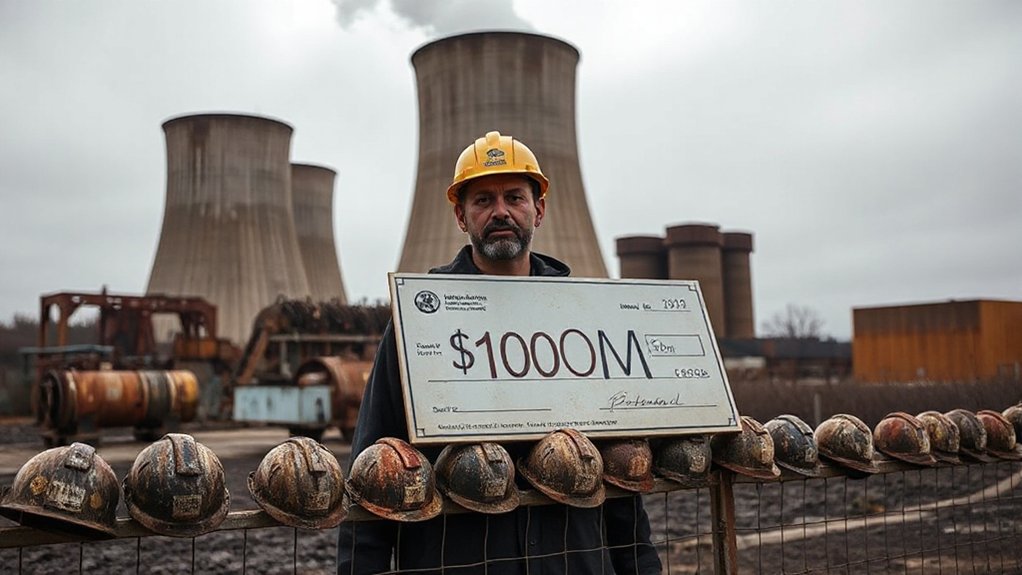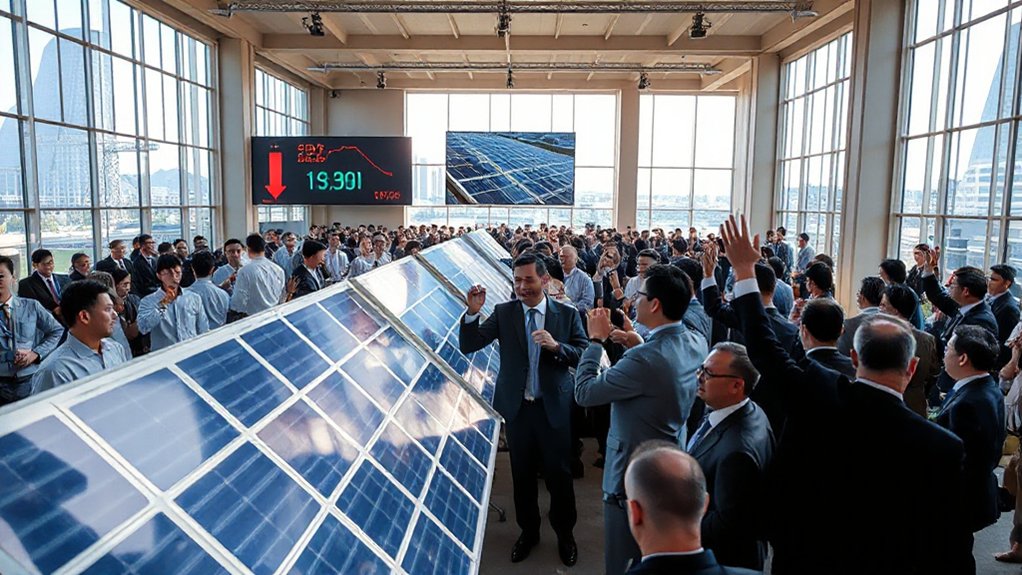Solar projects are exploding nationwide, with capacity expected to hit 153 GW by late 2025. Federal policy changes have cleared roadblocks, fast-tracking permits and interconnection processes. Thanks to the Inflation Reduction Act‘s tax credits, investors are going all-in. Texas leads with a whopping 11.6 GW addition next year, while battery storage will account for nearly 29% of all new electric capacity. The renewable transformation isn’t just coming—it’s already here.
A renewable energy boom is sweeping across America. The numbers don’t lie—solar capacity is expected to hit 153 GW by the end of 2025, up from 121 GW this year. That’s a whole lot of sunshine turned into electricity, folks. The EIA predicts a record-breaking 32.5 GW of new utility-scale solar next year. Not too shabby.
Solar dominated the U.S. electric-generating additions in 2024, accounting for 61% of all new capacity. And guess what? It’s not slowing down. Over half of all new power in 2025 will come from solar panels.
Solar is America’s power play, claiming 61% of 2024’s energy additions with even more sun on the horizon.
Everything’s bigger in Texas, including their solar ambitions—they’re adding a massive 11.6 GW next year. California follows with 2.9 GW. Five other states are jumping on the bandwagon too, collectively adding 7.8 GW.
Batteries are having their moment. The U.S. deployed 11.9 GW of storage in 2024. Next year? A whopping 18.2 GW planned. That’s nearly 29% of all new electric capacity additions. Together, solar and batteries will contribute 50.7 GW out of the total 63 GW additions in 2025. It’s like America finally discovered energy can be stored. Transformative, right?
Policy changes deserve some credit. The feds finally got their act together, expediting permits and clearing interconnection roadblocks. The Inflation Reduction Act‘s long-term tax credits have investors throwing money at renewables. Who knew stable policy could actually work?
Grid reliability concerns and decarbonization goals are pushing solar-plus-storage deployments. The industry currently supports 280,000 American jobs across 47 states, with projections indicating massive workforce expansion by 2035. Smart move. For industry professionals seeking the latest innovations, quarterly utility solar newsletters provide comprehensive updates on these developments. Advances in battery chemistry and cost reductions are making storage more economical every day. Modular designs and tracker systems boost efficiency, while digital controls make these plants more grid-friendly.
The total forecast for 2025? A staggering 63 GW of new electric-generating capacity—the largest annual increase since 2002. Solar and storage will make up over 80% of that. Despite political uncertainty due to the Trump administration, the renewable energy sector continues to demonstrate remarkable growth. It seems America’s energy future is looking decidedly greener and, dare we say, brighter.
References
- https://static.trinasolar.com/us/resources/blog/Trends-Shaping-the-Utility-scale-Solar-Sector-in-2025-20250120
- https://www.eia.gov/todayinenergy/detail.php?id=64586
- https://www.utilitydive.com/news/solar-and-battery-storage-will-lead-new-generation-in-2025-eia/740742/
- https://www.energy-storage.news/us-deployed-11-9gw-of-bess-in-2024-18-2gw-of-grid-scale-additions-expected-in-2025/
- https://pv-magazine-usa.com/2025/04/11/u-s-total-solar-capacity-to-double-over-three-year-span/
